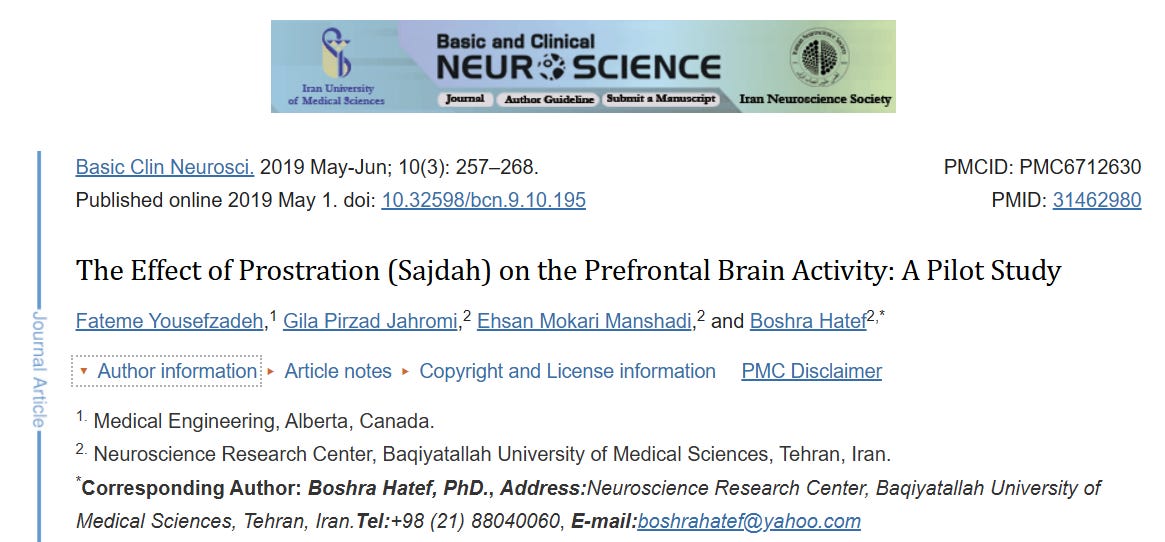The Effect of Prostration on the Prefrontal Brain Activity
A pilot study evaluated effect of sajdah, a prostrating position in Muslim prayer on linear and non-linear features of EEG in prefrontal region in five healthy persons with the hypothesis that sajdah could change brain activity. All the subjects in the study were free of any significant psychological disorder and were not on any neuropsychological medication. EEG signals were recorded from 32 channel system between 6:00 AM and 8:00 AM and data was analyzed using MATLAB version R2014b. Linear functions included power of frequency bands of θ, α, β and γ while nonlinear functions included entropy, Katz Fractal dimension, Petrosian fractal dimension, sample entropy and spectral entropy. This pilot study found some statistically significant differences in linear and non-linear features of EEG. The absolute power of γ band (γ1 and γ2) increased after sajdah in the closed eye state in men. The relative power of frequency bands from β2 to γ2 in open eye state and from θ2 to γ1 in closed eye state decreased in women after sajdah. The relative power of β1 band increased in men after sajdah in the closed eye state.

The non-linear features of EEG like the Katz Fractal dimension and Petrosian fractal dimension as well as approximate entropy and sample entropy decreased significantly in women after sajdah in the open eye state. The gender differences in EEG features diminished after sajdah in the open eye state.
Despite its small sample size, this study showed significant effects of sajdah on the EEG. Some of the differences in results between both genders can be explained by the effect of hormones. The increase in γ power seen in this study can be related to increased activity of Default Mode Network (DMN) of the brain. The decrease in γ power in the EEG of women might be due to shifting of cognitive processing from sensory and motor processing to inhibition control dominance and decreased activity of frontal node of the DMN. Results of this study cannot be compared to studies on meditation since meditation does not involve physical movements while sajdah is a physical prostration during prayer. Results of this study needs to be further evaluated with a bigger sample size.






